► New Valhalla supercar specs revealed (again)
► Production version is a plug-in V8; roughly £850,000
► 1064bhp, 0-62mph in just 2.5 seconds
It’s alive! Aston Martin has given the Valhalla its global dynamic debut ahead of the 2025 Monaco GP. Driven by none other than Aston’s F1 driver and two-time champion Fernando Alonso, the Valhalla circulated before the first practice session of the day – and it made for some stunning imagery.
‘Having followed this project closely for the past 18 months and working alongside the development team, unveiling Valhalla’s dynamic capability to the world at the Monaco Grand Prix weekend is a fantastic moment for both myself and the brand,’ said Alonso. ‘Outside of the outright power and dynamics, it delivers on all of the raw feelings and emotions you look for when behind the wheel of a car like Valhalla.’
Just 999 units will be. Made, with deliveries taking place in the second half of this year. For everything else you need to know about the Valhalla, keep reading.
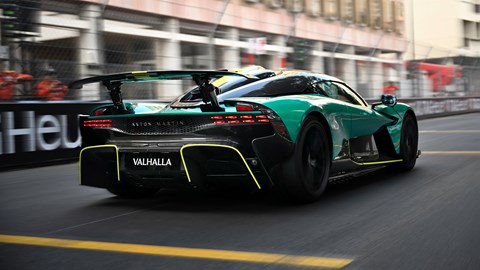
What is it?
A marked change for Aston Martin. Never before has the company built a ‘proper’ mid-engined car – let’s gloss over the compromised Valkyrie – and nor has it ever done a plug-in hybrid before. It’s also the first use for this particular V8, a 4.0-litre twin turbo unit that starts life at Mercedes-AMG but is, Aston insists, bespoke to the British firm. It is, in its words, ‘not a crate motor’.
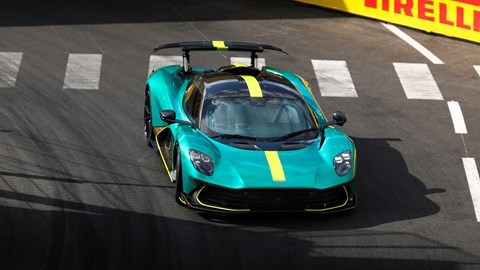
What the Valhalla has done is create a car that allows Aston to shout about its twin pillars of luxury with F1-inspired technology. By moving the frame of reference away from simply front-engined GTs, admittedly of varying degrees of focus, all of a sudden Lawrence Stroll’s Aston eco system starts to make more sense.
Give me some figures…
The headline numbers are impressive. 1064bhp and 811lb ft put it on a par with other exotica like the Ferrari SF90 XX, in Aston’s case derived from a combination of a flat-plane crank V8 and 6kWh battery powering three e-motors (two on the front axle, one at the rear within the transmission). The engine is good for 817bhp and is mated to an all-new eight-speed dual clutch gearbox. Pace is 217mph and 0-62mph in 2.5 seconds.
Aero? Plenty. 600kg of downforce from 150mph, thanks to a combination of a retractable rear wing and further active wings at the front. The Valhalla also borrows Aston’s F1 knowhow for a DRS function and the rear wing can double as an air brake. The clever bit is that it will maintain that downforce level all the way up to the car’s maximum speed thanks to the wings gradually adjusting their trim to bleed out of the excess downforce as the speed rises.
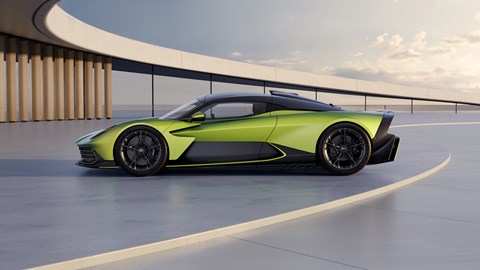
Eco? Ish. Thanks to the small battery, EV-only running is possible, for just over eight miles and up to 80mph. Supercar makers seem to be split on this strategy, some opting for EV-only running and others insisting that it leads to too many compromises. Ferrari even does both, with the SF90 and F80. Either way, Aston’s set-up should allow it to make the most of the low-inertia twin turbos in combination with the e-motors, delivering instant torque and allowing for torque vectoring on the front axle.
Unlike Ferrari or Porsche, there’s no e-motor housed within the turbo itself.
Is it a track-only, one-trick pony?
It’s definitely more circuit-focused than other Astons, but, according to Simon Newton, director of brand performance, it also rides well. ‘It has traditional Aston free travel in its primary context so it breathes with the road… [and] it also stands out with very good isolation from impacts.’
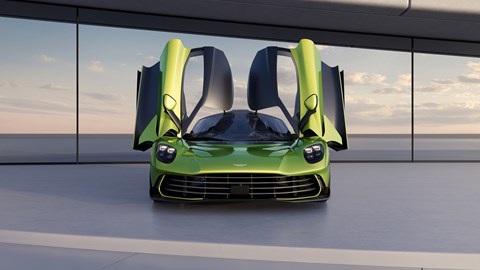
There’s double wishbone pushrod suspension up front (inboard springs and dampers make the air cleaner in that area) and the rear is a multi-link set-up. Billstein dampers all-round that link to the other systems like the aero and powertrain, to ensure that the car remains as stable as possible. No twin-valve dampers here, because, as Newton points out, ‘ours is a very performance-orientated system. Twin-valve dampers are more if you want ride comfort.’
What about inside? What does my £850,000 get me?
Alonso’ seating position. The Valhalla comes with one-piece carbon fibre seats and a laid-back, F1-style seating position to make the most of the link to the Aston F1 team. Even the steering wheel draws links from it.
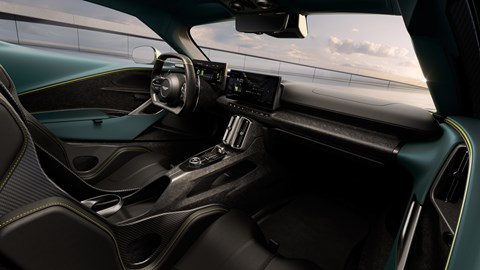
It’s from within here that you can cycle through the various drive modes – Eco, Sport, Sport+ and Race. Note no ‘normal’. Default is Sport while Race puts the rear wing in maximum attack mode.